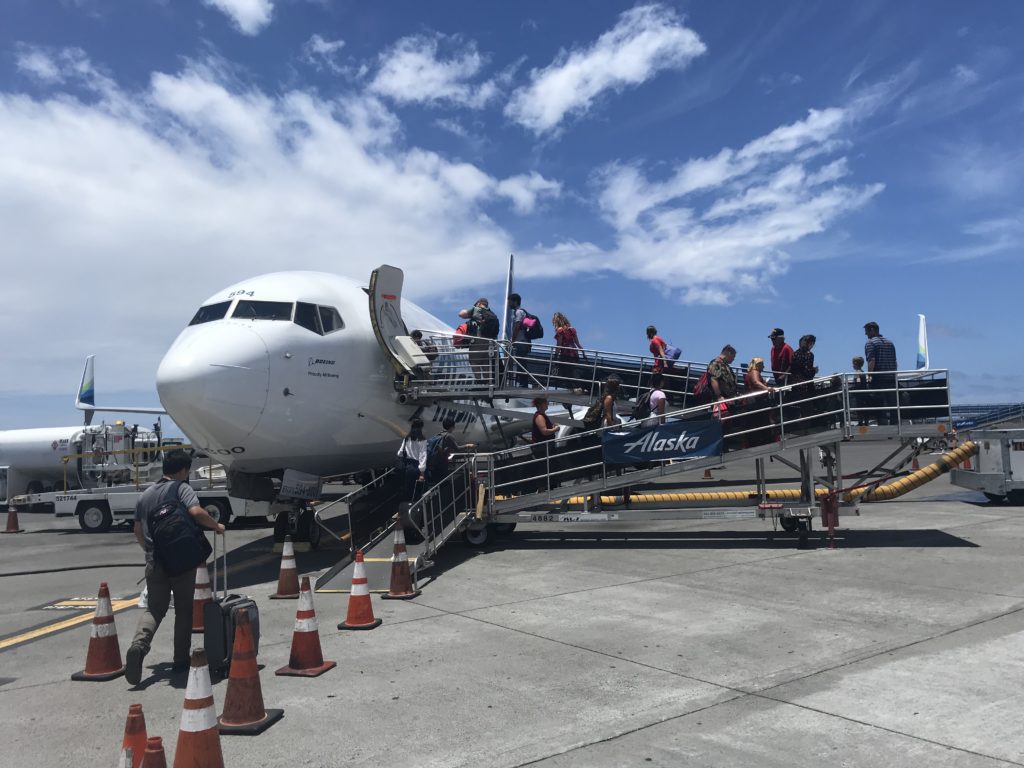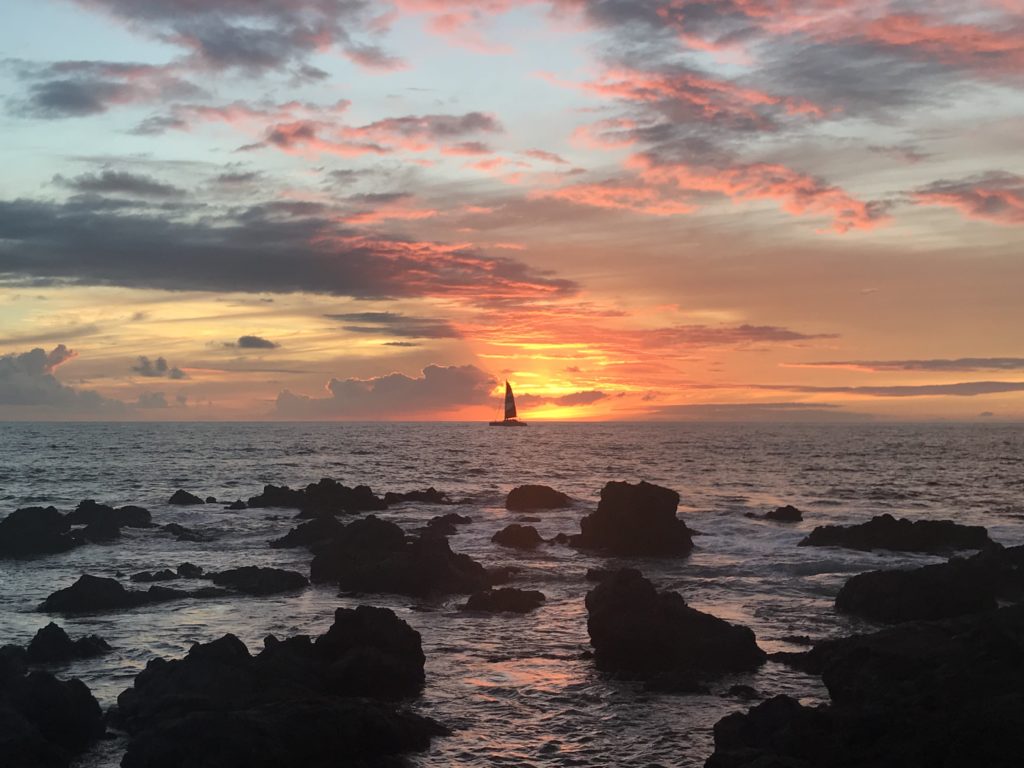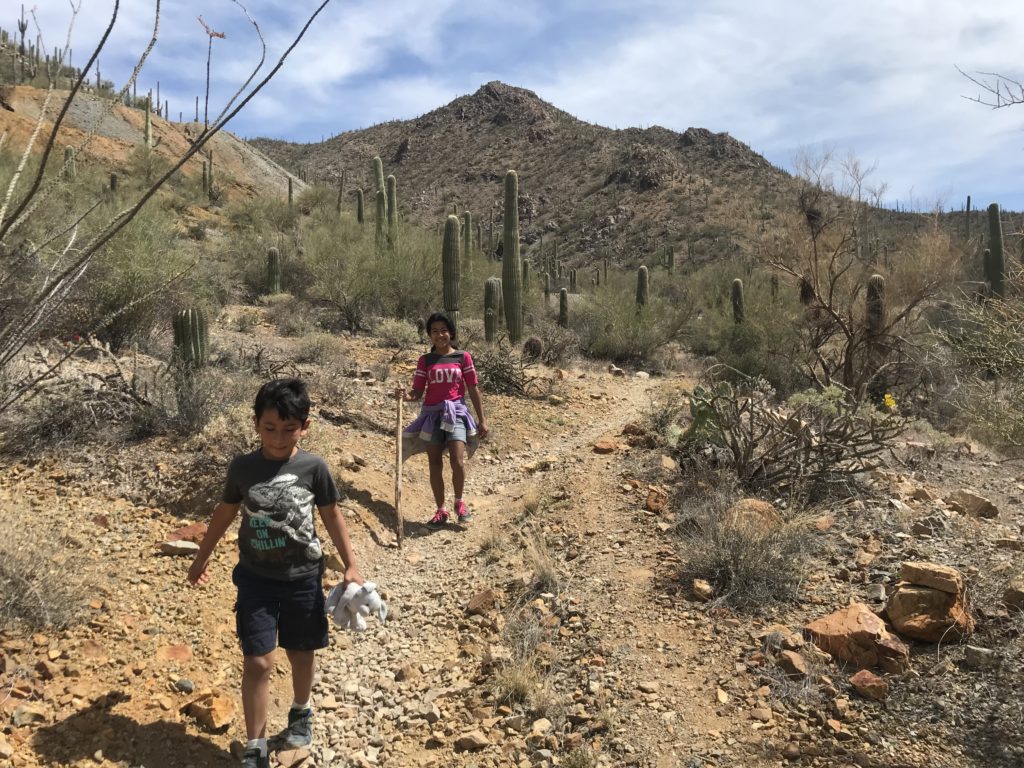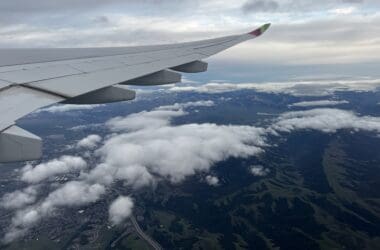We are quickly approaching two months since the gravity of the coronavirus situation really took hold in the U.S. I remember thinking that things didn’t seem all that bad. But then literally just a week later, multiple states issued “shelter in place” orders, where businesses were shuttered and many aspects of normal life abruptly ceased.
This cessation of “life as we knew it” wasn’t entirely universal. But for many, the changes have been profound. From loss of jobs, to watching family or friends fall sick with this virus, to the inability to enjoy normal activities such as heading to a restaurant or bar in the evening.
Travel has also been upended. The industry went from relatively healthy to utter free fall in a matter of weeks. Companies that have made billions in profits year after year were suddenly scrambling for cash. Getting refunds was ridiculously difficult. Travel hit its rock bottom in early April.
But now the writing is on the wall: travel needs to come back. Here’s why:
“Flattening The Curve” Isn’t A Long-Term Solution
When California issued its shut down order back in March, I mostly bought into the idea. I knew people who would be losing their jobs, but the effect seemed temporary. We’d be in this state for a couple weeks (remember “15 days to slow the spread“?), and there was immediately talk about tiding folks over with a stimulus check. At most, I figured some people would need to survive a month without income. Easier said than done for most of the American population, but the economic effect of the shutdown would (hopefully) be more temporary than permanent. The idea was the slow the spread of the virus as to not overwhelm the medical system.
And we did just that, as best I can tell. Yes, the statistics and news coverage coming out of New York City were intense and concerning. But, as far as I am aware, there weren’t any hospitals that were horribly overrun like we saw in Italy. New York City proved to be an outlier within the U.S. Entire temporary hospitals built to house patients haven’t even been used. Some states have only seen a handful of deaths.
What I’ve had to remind myself and others is that “flattening the curve” wasn’t about preventing total deaths from coronavirus (at least that was my interpretation looking at the less-than-precise charts through the lens of integral calculus). It was to keep things under control (if that is possible with a virus), while physicians figured out ways to better treat patients and facilities weren’t overrun.
Now that hospitals are suffering from lack of patients, the economic cost is worth considering. Unfortunately, the debate has turned into one where you’re accused of “wanting to kill grandma” by suggesting that we should begin lifting restrictions in earnest. The reality is that we simply cannot keep up the current state of things until there is a vaccine. This is a pipe dream by those who claim as much. We’ve flattened things, but we can’t continue to do so indefinitely. We have to adopt a more sustainable model.
The economic cost of shut down is going to catch up with us. Not to mention the fact that we may see just as many deaths of despair should we continue the current course.

Hawaii: A Quick Case Study
The effect of the pandemic and the resulting public policy can readily been seen in Hawaii. This is a state that is very much reliant on tourism. Direct tourism accounts for approximately 20% of Hawaii’s GDP, and much of the rest of the economy is obviously linked. You can’t just take away all the tourism dollars and expect it to survive.
Yet that is exactly what the 14-day quarantine-on-arrival policy is doing. All non-residents are essentially banned. Maybe not directly, but this is certainly the net effect. No one wants to go to the Aloha State if they must stay alone in their hotel for the first two weeks. This is longer than most people’s Hawaii vacations.
The result of this policy? Massive unemployment. Hawaii has just 17 COVID-19 deaths. Are such drastic economic effects justifiable? I get it, the disease can kill people. But what about the “side effects” on mortality that these policies will have? The overwhelming majority of Hawaiian businesses are anticipating a slump. People are speculating that there could be a rise in homelessness on the islands. Is this sustainable or wise?
Did Our Response Miss The Mark?
The proof is in the pudding with the antibody studies rolling in. The results from the two Stanford studies were a bit questionable, but the New York City antibody study was the nail in the coffin for me. When a full 20% of the population has contracted the virus, we now know it is less lethal than we all initially feared. We now know that many, many more people walk around with few to no symptoms, and antibody tests point toward a total mortality rate well under 1%. The asymptomatic cases also convinced me that thinking we can ever fully stop the spread is wishful thinking.
One epidemiological expert has warned that the social distancing and avoidance of people and life is the wrong approach and may be prolonging the outbreak. Sure, that was the point of flattening the curve, and it seems to have worked. But this may not actually be the best strategy. He argues that protecting the most vulnerable (e.g. the elderly, the immuno-compromised, those with pre-existing conditions) while letting the virus run its course through the general population as quickly as possible to achieve herd immunity will save the most lives. In other words, doing what Sweden did.
The mainstream news is finally catching on to the fact that the shut down response will have its own catastrophic effects. Take the skeptics seriously. People who warned of this potential fallout way back in March (which feels like two years ago) were quickly silenced. My own opinions swung rapidly over weeks three and four of the Caifornia shelter-in-place order.
It’s definitely difficult to get public policy right in the face of high uncertainty. This was certainly the case back in February and March. Things changed so quickly. But now that we understand the disease, have a couple promising drug treatment protocols, and know that it isn’t as deadly as feared, there needs to be discussion about balancing economic and public health concerns. Killing businesses around the world is a public health crisis in its own right.
Hindsight is always 20-20, and I hope that we as a society learn from our response to this.

We Need Travel Back
Like I said before, though, the data is in. COVID-19, while bad, isn’t as bad as initially feared. We can’t expect everyone to sit inside and put life on hold forever because of a disease. This has rarely, if ever, been the response in the past during these events. Yes, things like SARS and MERS and Ebola have deterred people from traveling in the past. But never on this sort of worldwide scale with a (mostly) coordinated approach by governments to shut travel down.
Now that we are talking about opening back up, the fear is that we will see a second wave of infections. I’m sure we will, but it likely won’t be as bad as many fear (especially in places hard hit already, like NYC). Given the example we have across the pond for a less-drastic approach (i.e. Sweden) and that fact that many people will still avoid things like group events and restaurants voluntarily, it won’t be a complete 180-degree about face. Many people will also avoid travel. They’ve said as much, and those who are flying are not enjoying packed planes.
This is why I’d advocate lifting the bulk of restrictions. People will self-manage well enough. Travel, even just domestically, won’t pick up overnight. We need to get the ball rolling before summer.
The reality is that people reliant on tourism around the world are going to suffer, especially those who live in poorer places without any sort of safety net. It will completely decimate businesses. It could even have a net negative environmental impact. Unfortunately, it’s likely that international travel is even more slow to rebound, due to varying country and airline restrictions.
My Leisure Travel Plans for May
I’m actually planning on getting out of town for the first time since February next week. Yes, it is leisure. And, no, I won’t be travel-shamed about it. This is going to be a thing for some time yet, and it is another reason people won’t take to the skies.
As far as risks go, my plans are about as low risk as you can get. Yes, it’ll include flying and staying in a hotel. But the primary activities will be hiking and getting outdoors in the desert. Heat, sunshine, and being outdoors all reduce the risk of transmission. I have few qualms visiting stores or restaurants, but if this include the need to wear a mask all the time, ordering to go will be the modus operandi (although I can also tell you I’m very much looking forward to sitting down in a mom-and-pop restaurant, should I find one that is relatively empty and is taking sufficient precautions). Risk will be as limited as I can make it.
Walking around Costco and Walmart these past weeks has just reinforced the decision to take a quick trip. Yes, flying in a metal tube with other people is a risk. But given my cost proximity to others on a weekly basis, the relative risk is a whole lot less. I’d take a different tack if we were talking about traveling from an area with a high number of cases to an area with essentially no cases. But we’ve seen coronavirus community spread nearly everywhere in the country, and our county is certainly not a hot-spot (we have 0 deaths).
Getting out this summer, especially after months of staying mostly cooped up, is going to be very much needed! It will likely still be prudent to avoid places like Disneyland or large group events. But it’s hard to argue that avoiding travel, especially with a goal of outdoor recreation, isn’t justifiable.

Final Thoughts
Travel directly or indirectly supports nearly 10% of the global population. Given what we know about the coronavirus now, it’s high time we get things back in gear for them. My fear is that it will be too little too late. Airlines may get bailed out, but many travel-dependent businesses are going to do under around the world. People’s livelihoods depend on visitors.
I know this flies in the face of the mainstream discussion on COVID-19 response. I see so many advocating for the shelter-in-place orders to remain. The argument is that people will die if we continue to spread this disease. But many are coming around to the reality that people will die if we stay this course. The economic effects and resulting additional mortality may not be immediate, but they are just as real.
The reality is that we have to grapple with risk every single day. I hop in my car, even though there is a 1 in 15,000 chance that I die in a car accident each year. Yet I have no qualms hopping in our vehicle. Embracing life means embracing a reasonable level of risk. It’s become less surprising to me that those least concerned about the coronavirus should rightly be the most concerned.
What honestly saddens me the most is seeing many call for a “new normal”. We don’t need a new normal. Societal fear of a contagion cannot become the new normal. We have weathered pandemics for centuries. Hiding away from a virus, unless you’re at critical risk from contracting it, doesn’t make any sense to me anymore. Living can’t mean we stop living.













I have been following this from home for three months. My background is in statistics so I look at numbers. The numbers totally support what you are saying. The lockdown is unsustainable and it has served its purpose of “flattening” the curve. We must move forward cautiously. Yes we will see more infections but the vast majority of people (if we first take care of our most vulnerable) will be fine. The virus will not go away and we can’t lockdown forever. Unfortunately, people have a primal fear of the invisible “bogeyman” which is understandable but must be put in perspective. Well written and thought out by the way.
Thanks, Frank!
A NYC stat 66.7% of the COvid patients were staying at home// someone brought it to them,,,,16.4% were in nursing homes and NYC CONTINUED TO ADMIT Covid patients to nursing homes till last sunday.. When the Governor changed the mandate….NUTS!!!
Policies like that have boggled my mind. Given that people in nursing homes are the *most* vulnerable population as a whole, it makes no sense to put any COVID-positive patient in a home.
“ But now that we understand the disease, have a couple promising drug treatment protocols, and know that it isn’t as deadly as feared, there needs to be discussion ….”
1. We DON’’T totally “understand” the disease. I.e., new reports of a related syndrome affecting children.
2. Promising protocols are just that…unproven. Try hydroxychloroquine? Bleach?
3. Mortality rates won’t be clear until more testing is done especially one the deceased — Fauci says deaths are likely being undercounted. Wuhan officials revised death rates higher.
For YOU to CHOOSE to travel is one thing. But advocating others (you don’t say that specifically, but that’s the clear intent—you ARE posting on your blog) to emulate you is…inappropriate at the very least when there are still uncertainties about the disease. AND IT CONTINUES TO SPREAD.
But then again, you’re not a public servant/medical expert…you’re a businessman trying to solicit clicks.
Good luck.
We don’t understand it entirely, sure. But we understand it far better than we did two months ago. I’d also argue that promising protocols are still better than putting people on ventilators when they deteriorate. That’s the real death sentence, as over 80% of vent patients have died in the U.S. From the couple recent studies I’ve read, hydroxycholoquine is fine if administered earlier rather than later. Just a few counter-points. Here’s one study: https://www.sciencedirect.com/science/article/pii/S1477893920302179
The biggest tell is *total mortality*. We aren’t tracking all that much higher than the worse seasonal flu in recent history (2017-2018), which resulted in a maximum of 120% of expected deaths. This is likely to get no higher than 135% over a few weeks. Yes, there is a risk of death from the virus. But there needs to be a discussion about balancing deaths now versus deaths later from a crashed economy.
You missed the point. The lockdown is unsustainable and will not make the virus “go away”. Everyone will make their own choices but these discussions need to be had in a thoughtful and rational manner.
It sounds like you have some confirmation bias going on where you’re hearing what you agree with. Why not just say that you’re traveling because you want to? Instead, you say that you need to travel, which is obviously not the case.
On the flattening the curve issue, my understanding was that the premise was twofold: keep hospitals from getting overwhelmed so people don’t die in the hallways as in Italy and build up a massive testing and source tracing infrastructure. While it’s nice that this is half done it’s kind of like having your car half fixed.
One area that I agree with wholeheartedly is that we can’t lock ourselves away for however many years it takes to come up with a vaccine. The tricky part is to get things rolling again, and that means personal sacrifices like wearing a mask at all times in public when you’re not eating or drinking.
Everybody wants things as close to what they were before as possible. We just have to follow the science to get there quickly.
On a final note, Travel Blogger Buzz has a ton of good sources about the virus and related topics. It might be worth a look.
I’m saying we need travel back, in a more collective sense. Do I need to personally travel? Not at all. I just confirmed that I’ll need to make a work trip on the heels of this one, but this is 100% leisure.
At the outset, getting testing in place was definitely a goal. Tracking/tracing…not so much, and I don’t agree with this in principle.
What I’m really asking is for some balanced thought on the effects on mortality from worldwide economic shrinkage versus the direct effect of the pandemic. There may be some confirmation bias going on at this point, but I’ve found over my (admittedly few) years is that questioning the mainstream narrative is rarely unhealthy.
Part of the problem with your notion of confirmation bias, as you accused Ian of having, is that it assumes that the information available is objective and he is choosing the parts he likes. But the majority of the information on COVID-19 we have received thus far has not been objectively transmitted by mainstream and social media. War-like metaphors, selective (and sometimes inauthentic) images of ICU’s, ticking world counters measuring infections, deaths etc. only serve to fan the flames of fear and paranoia. Here in Canada, the rolling three-month overall mortality rate was statistically the same as most years during the same months. I am not denying that people have been infected and some have died. But the numbers suggest it is not that different in terms of overall mortality rates than most years. That is NOT the impression that most people have due to the coverage. The non-COVID suffering (in terms of list jobs, pensions, mental health concerns etc.) is one that needs to be looked at and we need to move forward albeit in a cautious manner.
The total mortality rate is something I’ve been following. So far it looks like we will be tracking at *most* up to 135-140% of normal for some weeks. For comparison, the most recent bad flu season (2017-2018) resulted in a max of 120% of normal mortality in early 2018. Yes, this is worse. But it’s not 2 million dead as we were initially told it might be.
This a very good viewpoint. Conversely, LA County just added 90 MORE DAYS of this ridiculous shut-in policy while most of the country is going the other way. Americans need to move. We need to work. We need to travel. It’s what we do. You’re absolutely right, sequestering ourselves SLOWS down our best(and likely) only way out of this: Herd immunity. No vaccine is coming. Treatments MIGHT…might. And if some are still afraid to venture out? That’s cool. Stay in. Will people die? yes. Will some sort of over-hyped “second wave” arrive? Probably. Staying inside and doing nothing has never been the answer. Let’s get moving.
I saw that in the news yesterday. 🙁 I hope LA County reverses course. Up in the rural north part of the state we are clamoring to open up.
The idea that life and business can come grinding to a halt for more than a few weeks is untenable. People will die no matter what. We cannot deny that. But life wouldn’t be life without risk.
This has to be one of the better, more balanced, non-hysterical posts I’ve seen in a while.
I personally believe, our country has hyper overreacted.
In particular, I think it’s becoming clear that the economic toll, combined with the childhood deaths From kids not getting measles vaccines now, with deaths of suicide/depression, drug use, crime and all that, will certainly be greater than the actual death toll from the virus.
If the UN is worked that hundreds of thousands of kids might die. Then, that seems pretty aggressive to ‘save grandma’
I think once all the hysteria dies down though, I hope our country will have a reasoned and informed debate, about the intense power of the mass media and how easily politicians take action to appease a demanding social media mob.
I would make a medium sized wager, but hopefully the outcome from all of this will be good, as we realized we were hoodwinked, by the people in power.
Hopefully we see a resurgence of conversation, education, facts, logic and reason over sound bytes, hysterical tweets and whatever else gets people’s attention for 5-10 seconds at a time.
Thanks for the comment, George. I, too, hope that we can get back to a place of reasonable and informed debate. I’m generally a skeptic of hysterical media reports, and watching the “mob” run down the path of continued shutdown is what led me dig into the data on my own.
I think the tide is turning. The reaction seemed to be “we must do something!” even if something wasn’t ultimately the best course of action. I hope we can look back at this event and hope to learn from it.
A few points. First, the estimated mortality rates are just estimates, and the range is so wide that it really is impossible to say what the actual mortality rate is. Keep in mind that more than 80,000 people have died in about 2.5 months in an environment where we *have* taken extreme precautions to limit community spread and eliminate hospital overcrowding. Further, we did so much earlier than our European counterparts – for example, the same day of Rudy Gobert’s positive test (after which essentially all US sports stopped their seasons within 24 hours), there was a Champions League match played before a full stadium in Liverpool. Shutdown orders began locally and at the state level the following week, giving us only a huge earlier-moving advantage than Europe, despite the virus having reached and spread widely there earlier than here. Those factors and others (I think our less-dense built environment certainly played a role, as does the prevalence of private vehicle transportation) may have helped reduce the death rate here. We simply do not know what those figures would look like if we had not taken any action to curb the spread.
Second, I think that the length of the shutdown orders has been appropriate. Their purpose was, as you indicate, to help reduce spike in cases that would overwhelm hospital capacity and to allow medical professionals to develop better ways to treat patients. A hugely important purpose that your article does not mention is that these orders are also designed to allow countries to ramp up testing capacity and contact tracing abilities so that reopening can happen while allowing for targeted responses to outbreaks. In this country, we have done neither of those things despite having bought sufficient time to do so. In other words, US citizens made the sacrifice necessary to buy time for elected officials to safely reopen slowly, but state and, to a far greater extent given its resources and powers, the federal government have utterly failed to take the steps needed to ensure for a safe reopening of the economy. I think that is why such a large number of people, as shown in poll taken on this subject, are going to be unwilling to engage in economic activity that would have seemed normal pre-pandemic, such as dining in a restaurant (in addition to the fact that people’s confidence in the mortality rate being lower than 1% is pretty low). This factor also played into the large number of voluntary cessation of travel and dining out even before any government restrictions were in place. Obviously, we can’t sit around in lockdown for 18+ months until a vaccine is created, tested, and widely administered, but our governments have failed to ramp up protective measures that would allow for a safer and more widespread and confident reopening, and the public recognizes that that is the case.
Last, it is not yet clear that antibodies will protect recovered patients from contracting the virus a second time – i.e., at this early stage, we simply don’t yet know whether there is “immunity” in the sense we’re used to having from viruses. So, at this point, it isn’t clear whether someone is protected or not.
All of this to say that I don’t begrudge you taking a vacation. Personally, I would not get on a plane to do so at this stage because I have insufficient confidence in the protective measures taken against the spread both by public officials and private businesses. I plan to take some form of getaway during the summer, but will do so by car and it will almost certainly be oriented around outdoor activities, as you indicate yours to be. But ultimately, public confidence in the safety of travel (and other things like dining out) is what needs to happen in order to begin to restore the economy; governmental restrictions are only a piece of the equation.
I’d counter with the fact that we missed the window for taking sufficient precautions, at least in NYC. With 20%+ of people testing positive for antibodies, they were hit hard already. But…places in Italy top 70% with antibodies, so they aren’t through things fully. The degree and timing of response has certainly been a major factor in how hard places are hit, and places in the U.S. did respond quickly enough to really help. But now we’re stuck in this spot, especially where the disease *hasn’t* passed through much of the population. The balance now needs to be between economic “recovery” and not allowing the spread of COVID-19 to ever become a conflagration. A “slow burn” to get us through it seems to be the best tack. I fully agree that sitting around for 18+ months just simply isn’t possible, and people need to recognize this.
The hesitancy of people to travel is the main reason I would support the lifting of any restrictions, at least domestically. I wouldn’t *encourage* anyone to travel, especially if they do not wish to. But I would not support preventing/discouraging people who want to at this point. We’ll gradually move back toward normal.
Thanks for the reading and the lengthy comments!
Great points, totally agree.
Thanks for reading!